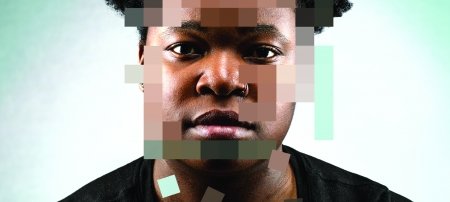In 2011, Soonkwan Hong wrote an appendix to his paper. The fictional scene he described is not so different from today’s reality.
Along with a fellow School of Business and Economics researcher, Hong, associate professor of marketing at Michigan Technological University, published a paper in Journal of Strategic Marketing (DOI: 10.1080/0965254X.2011.557742) in 2011. The focus: ubiquitous technology.
At the time, 35% of Americans owned a smartphone. Today, 95% do. So perhaps it isn’t surprising that one of the editors requested more explanation of what “the characteristics and functions of ubiquitous technology” really meant.
Hong and his co-author, Wang, were interested in the role technology could play when it came to building brand loyalty and mediating consumer-producer relationships. Remember, in 2011, Instagram was only a year old, Amazon was still mostly known for selling books, Netflix was delivering DVDs (and still does to three million subscribers, actually) and the Oculus virtual reality headset hadn’t launched. The ideas of smart fridges, Pokémon Go, cashier-less checkouts and “an app for that” was still campy science fiction to most people.
Which is what made it so hard for Hong to explain the potential impact of emerging technology on consumer trends. With nearly a decade of hindsight, it’s easy to see the rise of apps and social media; in today’s bustling digital market, clothing companies sell via Instagram, Amazon sells everything else, Netflix delivers carefully calculated entertainment and Oculus is a household name. And curated shopping materialized through companies like Stitch Fix and Blue Apron. Their brands are not simply recognizable logos; brands became experiences and digital entities as formless and far-reaching as the algorithms they use to get to us. When Hong submitted his paper nearly a decade ago, customer loyalty still sounded like a popular mail-order subscription. Today, it’s a measure of clicks, likes, comments and time spent on webpages — all tailored to consumer preferences.
But Hong had to convince his editors of the future he saw in mobile devices and online shopping. Here’s the paragraph he sent in as an appendix.
"The tremendous yet hypothetical impact of ubiquitous technology can be illustrated as follows. Daniel, a 35-year-old sales representative in a company manufacturing medical instruments, wakes up at 6 o’clock in the morning. The first thing he encounters is the television news that is chosen by the satellite cable network company for his tastes. The commercials on the TV are also selected based upon his lifestyle and consumption pattern data owned by the company. The food he consumes for breakfast is also recorded by the sensors on the refrigerator and cabinets in the kitchen; then, the information is sent to the cereal, milk, and/or orange juice companies. In fact, he has suggested that the cereal company make a rice and bean cereal. He sent the idea over his cellular phone suggesting the design of package and the name. It was a successful attempt for the company and a satisfactory experience for himself. While he is commuting in his car, on the screen placed on the dashboard, a pop-up from his insurance company rises to inform him about the traffic conditions and to remind him of his renewal with a more competitive and suitable premium. Companies with his information try not to disturb him with messages or pop-ups, because they know that he, as a sales representative, would not have much time during the daytime. However, as the lunchtime closes, he may receive several messages from companies, usually restaurant chains with a branch proximate to him. He would appreciate the messages because he can save at least a few minutes to find a place to eat and think what he should eat. Companies would reserve their marketing activities until 9 o’clock when he usually finishes dinner meetings with clients. On his way back home, companies start sending information about a relaxing spa close-by, some alcoholic drinks, or places where he might want to go during the weekend. When he arrives at home, the cable company automatically airs funny shows and commercials for the products for which he needs to shop or may like to buy for him or his clients. At 11 o’clock the TV goes off and comforting music from the cable company plays."
“I view the modern market as an institution — and you can’t think or talk about the market without including technology,” Hong said more recently in an interview at the University library. “Technology is everywhere, it’s integrated into our lives — or more precisely, our lives are integrated into technology.”
Even glancing around the open space of the library café reveals the truth of Hong’s words. There’s an electric socket at every table. TVs scroll through job advertisements for mechanical engineers with coding experience. Students are more likely to have open laptops than open books.
Hong seems to neither revel in nor scorn the scene. As a scholar of what’s called consumer culture theory, he sees technology as not only ubiquitous but unavoidable. The true challenge is not escaping or ignoring the invisible algorithmic behemoths in the room; rather, it’s developing a keener and wiser sense of our relationship with technology, the people who own the devices and, most importantly, engaging in real and frank conversations about who owns the data.
"It’s about re-articulation of all decision-making processes," Hong said. "It’s also about the peril of blithe trust in technology."
Digging deeper into tech culture is the kind of work Hong and others will be doing in the new Institute for Policy, Ethics, and Culture (IPEC), planning for which began in April 2019. The team will study nearly everything that connects our digital and global world: Online shopping, self-driving cars, drone-based remote sensing, medicine and healthcare, education, judicial system, even finding love. If technology is the bones and muscles of the future Hong wrote about nearly a decade ago, then IPEC will look at the ligaments and fascia that hold the organism together as it moves in today’s world.
Of course, this organism’s brain is the most fascinating — and contested — part. Like metaphors, algorithms are approximations and proxies of the real and living, Hong explains. “Algorithms are bodies without organs; they control without being controlled; they’re governing bodies with no authority.”
The solution is not more technology. It’s making sure we keep the heart of humanity beating and enough natural neural networks to be the brain of our tech-enriched culture.
Michigan Technological University is an R1 public research university founded in 1885 in Houghton, and is home to nearly 7,500 students from more than 60 countries around the world. Consistently ranked among the best universities in the country for return on investment, Michigan's flagship technological university offers more than 120 undergraduate and graduate degree programs in science and technology, engineering, computing, forestry, business, health professions, humanities, mathematics, social sciences, and the arts. The rural campus is situated just miles from Lake Superior in Michigan's Upper Peninsula, offering year-round opportunities for outdoor adventure.




![Tech’s annual Computing [MTU] Showcase comes to campus Oct. 2-4.](http://www.mtu.edu/news/2024/09/images/cyber-security-202110070277-banner450.jpg)
Comments